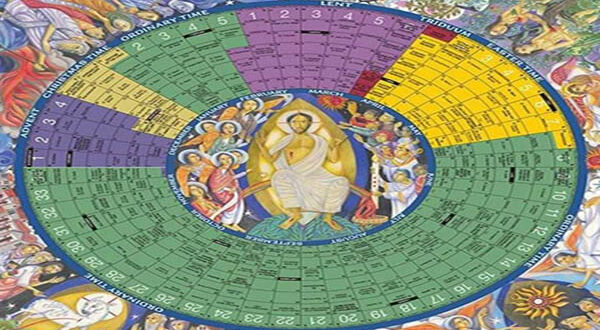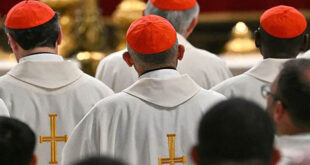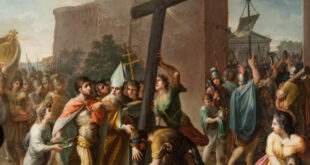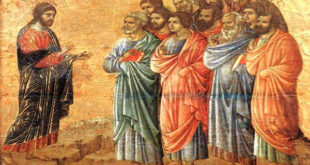“Jesus Christ is the same yesterday, today, and forever.” (Hebrews 13:8)
📜 Introduction: Beyond the Clock and the Calendar
We live obsessed with time. We measure it, schedule it, fear it. We count the days, celebrate birthdays, mark anniversaries, race toward the future or sigh over the past. But… what if I told you there is a different kind of time? A time not ruled by the ticking of clocks or the rhythm of workweeks, but by the mystery of God. A time that doesn’t wear you down, but transforms you. A time that doesn’t just pass… but sanctifies. That is the Liturgical Year.
In a linear world, the Church lives in a spiral: each year it returns to the same mysteries, not through useless repetition, but through ascent. Every Advent, every Easter, every Pentecost is different because we are not the same. The Liturgical Year is not a calendar: it is a pedagogy of salvation, an itinerary of the soul, a map of the heart toward God.
🏛️ I. What Is the Liturgical Year?
The Catechism of the Catholic Church (n. 1168) explains it like this:
“Beginning with the Easter Triduum as its source of light, the new age of the Resurrection fills the whole liturgical year with its brilliance. Gradually, on either side of this source, the year unfolds—the entire mystery of Christ is recalled in the course of the year.”
The Liturgical Year is not a human invention to organize feasts, but a sacred structure that commemorates the Christological mysteries: the key moments in Jesus Christ’s life that have redeemed us. Each liturgical season—Advent, Christmas, Lent, Easter, Ordinary Time—is not a cold recollection, but a living actualization. What we celebrate is not left in the past: it becomes present through the action of the Holy Spirit.
The liturgy is the “story of God” told and lived with us and for us. And the Liturgical Year is its grand stage, on which each one of us is invited to be a protagonist in our own salvation, not a mere spectator.
⛪ II. Historical Roots: Time Redeemed
From the earliest centuries of Christianity, the believing community understood that time had been touched by the eternal. It was no longer a never-ending circle like the pagans believed, nor a meaningless straight line. With Christ, time becomes kairos: a favorable moment, the presence of the divine in the human.
“When the fullness of time had come, God sent his Son, born of a woman, born under the law.” (Galatians 4:4)
Easter was the first great Christian celebration. Everything revolved around the Lord’s Resurrection. Then, over the centuries, other celebrations were added: Advent as the waiting for the Messiah, Christmas as His birth, Epiphany, Lent as preparation for Easter, the Easter season until Pentecost… Each stage reflected an aspect of Christ’s mystery.
Over time, Ordinary Time was added, which is not “empty” time, but time for growth, time for following the Master in daily life. The memories of the Virgin Mary and the saints were also incorporated—those who lived the Liturgical Year not as spectators, but as true actors of the Kingdom.
✝️ III. A Theology of Sanctified Time
In Christian thought, time is neither an enemy nor an accident: it is raw material for holiness. God enters time through the Incarnation, and since then, every moment can be a doorway to heaven.
1. Christ, Center of Time
The Liturgical Year has one protagonist: Jesus Christ. He is the sun that gives meaning to the seasons of the soul. Everything revolves around His paschal mystery: death and resurrection. We are not dealing with a “historical” Christ like in textbooks, nor with a “beautiful memory,” but with a living Christ who acts today in His Church.
As the Second Vatican Council teaches (Sacrosanctum Concilium, 102):
“In the course of the year, the Church unfolds the whole mystery of Christ, from the Incarnation and Birth until the Ascension, the day of Pentecost, and the expectation of the blessed hope and the coming of the Lord.”
2. The Holy Spirit as Interior Dynamism
Each liturgical season is a “spiritual station” in which the Holy Spirit works something particular in us. He prepares us in Advent, fills us with joy at Christmas, purifies us in Lent, renews us at Easter, and strengthens us at Pentecost.
3. Mary and the Saints: Icons of Redeemed Time
The Virgin Mary, as a figure of the Church and Mother of Christ, occupies a special place in the Liturgical Year. From the Immaculate Conception to her Assumption, her life is in perfect harmony with divine rhythms.
The saints, for their part, are like stars scattered across the liturgical sky. They don’t interrupt the Liturgical Year—they enrich it. Each memory is proof that living in Christ, in each season, is possible.
🧭 IV. The Liturgical Year as a Spiritual Itinerary
The Liturgical Year is not just to be known, but to be lived. And to live it means entering into its spiritual pedagogy:
🟣 Advent: Active Waiting
We learn to wait, not with arms crossed, but with hearts prepared. Advent’s watchfulness purifies our hope.
⚪ Christmas: God With Us
We do not celebrate an idea, but a fact: God became man and entered our history. The tenderness of the Child reveals the humility of the Almighty.
🟣 Lent: Conversion and Combat
A time of desert, fasting, and struggle. It is a “strong” season of returning to the heart and allowing ourselves to be molded by grace.
🟡 Easter: Victory and Renewal
Christ has risen—and we with Him. It’s time to sing “Alleluia!” with all our soul and to bear witness that death has been conquered.
🟢 Ordinary Time: Faithful Following
Here we live the everyday with eternal meaning. There are no “ordinary” days when life is lived with Christ.
🌱 V. Practical Applications for Today
In a world marked by hurry, stress, and fragmentation, the Liturgical Year can be a spiritual compass and medicine for the soul. How can we apply it?
1. Living Counter-Culturally
While the world is carried away by trends and consumerist rhythms, the Christian lives by a different beat: that of God’s love. We don’t start the year with fireworks but with the Mother of God. We don’t just celebrate birthdays, but eternal births.
2. Ritualizing Life
Mark the home with liturgical signs: Advent wreaths, Nativity scenes, ashes, holy water, Paschal candles, images of saints… These elements remind us that the home is a domestic church.
3. Praying with the Church
Follow the Missal, read the daily Gospels, participate in the Liturgy of the Hours. Joining the Church’s rhythm is like rowing with the current, not against it.
4. Educating in the Faith
Teaching children the meaning of the Liturgical Year gives them deep roots. It’s not enough to know what we celebrate, but also why and for what. Let them feel that Easter is not chocolate, but new life.
🔥 VI. The Liturgical Year, Now More Than Ever
In a world that measures everything by productivity, the Liturgical Year teaches us the value of waiting, of silence, of the sacred. It reminds us that not everything important can be bought, measured, or posted.
Each year we return to the Mystery, but not as a photocopy—rather, as a new birth. Thus, the Church sanctifies time and makes it a sacrament.
“The days will be different, but the love will be the same. Christ awaits us in every season. He is the One who was, who is, and who is to come.”
🙏 Conclusion: Turning the Calendar into a Path
The Liturgical Year is not a pious decoration. It is a system of spiritual life, a way of seeing time through the lens of faith. In each feast, in each color, in each prayer, God is made present.
When you live the Liturgical Year, your time stops being just yours and becomes God’s time. You no longer live by inertia but with direction. You don’t repeat the year: you walk through it with Christ.
I invite you to make the liturgical calendar your spiritual map—not to control time, but to allow Christ to transform it and transform you. Because in the end, time is not the same for everyone… it is only eternal for those who live it with God.






